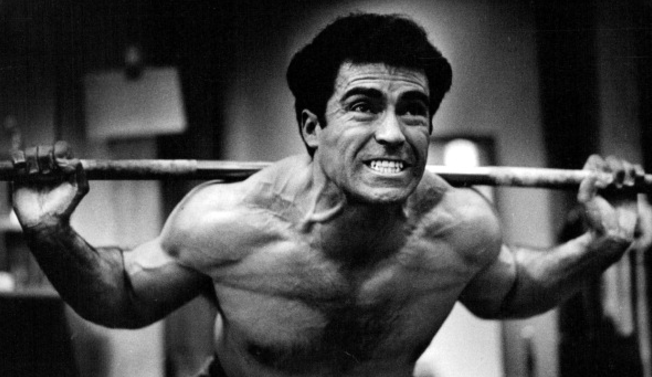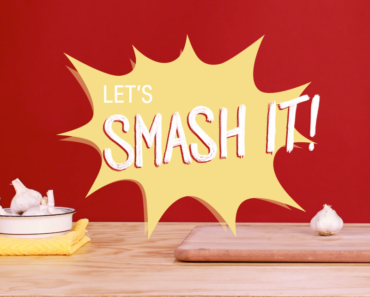If you’ve just started a linear progression barbell training program — you’re adding weight to the bar with every workout — you may have noticed that you can consistently add that weight without feeling like you have to strain yourself very much to complete the lifts.
But the day inevitably comes when you get under the bar for a squat, and it feels really, really heavy. So heavy you don’t think you can complete the lift. So you don’t. Instead of pushing through the sticking point, you quickly bail, rest the bar on the safety pins, and scratch your head, wondering if you’ve reached a plateau and need to do a reset or even change up your program. Based on your experience with linear progression, getting stronger means that you can lift more weight every week without much exertion, so it doesn’t make sense that the weight feels super heavy now.
But it’s not in fact the case that you need to change your programming or even reduce the weight for a reset. The programming is fine.
As a novice lifter, what you need to do instead is embrace the grind.
To help us understand the why and how of grinding while lifting, I talked to my barbell coach, Matt Reynolds of Starting Strength Online Coaching. As we’ll see, learning to understand and embrace the principle of the grind will not only help your gains in the gym, but strengthen your life outside of it.
What Is the Grind?
The “grind” is when you just keep exerting yourself on a rep as much as you can for as long as you can, even though your body is telling you to stop. A successful grind doesn’t mean you’ll necessarily complete the rep (though you’ll often manage to do so), it just means you push or pull as hard and as long as you can before you cry uncle. You give it your all and leave nothing on the platform.
Why the Grind Is Important in Barbell Training
For Matt, the grind is one of the most important principles he coaches his clients on. He gave me three reasons why:
1) The grind makes you stronger. The stress-adaptation-recovery cycle is the principle that explains why weight training makes you stronger. First outlined by German scientist Hans Selye, this principle states that when the body is exposed to stress (or “alarm” as Selye called it), it will begin a biological process to deal with that stress, recover from it, and then adapt and compensate so that it is better prepared to handle it if exposed to the same stressors again.
Weight training is the stressor that pushes your body out of homeostasis. When you spend the day after a difficult training session recovering through rest, proper nutrition, etc., your body then adapts by getting bigger and stronger. At your next workout, it’s not only ready to handle that same stressor again, but can handle exposure to even more stress (i.e., heavier weight, more reps). The stress-recovery-adaptation cycle then starts all over again.
But the cycle only makes you stronger if you kickstart it by giving your muscles an adequate amount of stress. As mentioned above, when you first start training, you can get the stress needed for adaptation without feeling like the weight is all that heavy. But if you keep training long enough, you’ll reach a point where the weight you need to lift to give your body sufficient stress is going to feel so heavy that it doesn’t feel like you can lift it. Your natural inclination will be to just give up. But when you bail at the first sign of a lift feeling heavy, you deny your body the stress it needs to get stronger.
Instead of bailing, you need to grind.
Push yourself as hard and as long as you can. Even if you don’t complete the lift when you grind it out, you’ve provided your muscles the stress they need to adapt and get stronger for next time.
2) The grind (possibly) makes you bigger. Not only does grinding make you stronger, it might also make you bigger. Matt prefaced this point by saying it was just a theory, but we do know that hypertrophy (muscles getting bigger) is induced by time-under-tension. (This is why bodybuilders focus more on volume in their training: more volume = muscles spending more time-under-tension = chesticles.)
Based on the principle that time-under-tension creates an adaptive response that produces larger muscles, Matt (as well as other strength experts) hypothesize that grinding out a really hard rep can help induce muscular hypertrophy.
So the next time you feel like giving up right away on a really hard shoulder press, remind yourself that by grinding it out, you’re increasing the size of your man antlers (shoulders).
3) The grind ensures you’re using 100% of your force. The third reason Matt gave as to why learning how to grind is important is that it ensures we’re actually using 100% of our force in a lift.
There’s this thing called “Rate of Force Development.” It’s basically how fast an athlete can develop force. Younger and genetically gifted athletes can go from 0% to 100% force pretty dang fast. So if a natural athlete is pulling on a deadlift, he’ll be applying 100% of his power on that bar pretty quick and probably doesn’t need to grind at all to lift it off the ground.
If you’re older or just an average athlete, your rate of force development isn’t as high, so it takes awhile for you to go from 0% to 100% power. When you first start pulling a deadlift, you might be at 30% force. You pull for another second, and you’re at 50%. You pull for a second more, and you’re at 80%. You pull for another second, and you finally hit 100% force output, and the bar comes off the ground.
While it takes a natural athlete just a second to reach 100% force output, it might take us mere mortals three, four, or even five seconds. That’s why the grind is so important. It ensures your muscles are actually firing on all cylinders.
Why You’re Not Grinding
So if grinding provides all these benefits, why are novice lifters prone to avoid it?
Two reasons.
First, many beginning lifters are afraid they’ll injure themselves if they push themselves when their body is saying “Nope.”
“As long as your form is good, you will not injure yourself while grinding a rep out,” Matt says. (To repeat: as long as your form is good. Grinding pain is different than injury pain; you’ll know when it’s the latter, and you’ll know to stop.) Extensive research has shown that your mind, which is more interested in preserving your energy stores than hitting a new PR, will tell you to quit before you’ve actually become physically incapable of continuing an exercise.
Second, it’s just plain hard. Your body is telling you to stop, so it’s counterintuitive to override these anguished, if overwrought, signals and say, “No, you can keep going because this will make you stronger.”
Even though you’re not likely to hurt yourself by continuing to push through the pain, the grind will be super uncomfortable. For me, a good grind feels like my head is going to pop off my body. I may even garner a bunch of red spots near my eyes and on my nose due to capillaries bursting from the extreme pressure that builds up in my body during the grind. (Fun fact: Your capillaries will actually adapt to this stress and the next time you lift heavy, they won’t burst. Yes, weight training can strengthen your circulatory system.)
Fortunately, research show that you can override these premature prompts to throw in the towel, and tell yourself to keep on grinding, no matter what your brain says or how much it hurts. You just have to dig deep and ask yourself: “How bad do I want this?”
How to Grind in 2 “Easy” Steps
Step #1: Exert yourself for at least five full seconds. The first rule of grinding is that you must commit to at least five full seconds of grind. Nothing less than five seconds of full exertion.
Before any heavy lift, I verbally tell myself “5 seconds of grind no matter what.” When I did my first barbell competition this fall, before I started each lift, Matt would cue me with “Five full seconds, five full seconds!” He even counted while I was lifting to ensure I pulled for at least that long. You can see that in this video of my deadlift:
A post shared by Art of Manliness (@artofmanliness) on Apr 1, 2017 at 4:52pm PDT
Having a concrete number in mind helps ensure that you grind for long enough. When you’re in the middle of a really hard lift, time slows down. It might feel like you’ve been grinding a squat for five seconds, but it was actually just two. When I’m grinding it out, I mentally count to five. If that’s hard for you, a training partner can count out loud.
From here on out, make it an iron clad rule that you will grind on any rep for at least five seconds.
Step #2: Forget your feelings. There’s a difference between being fatigued and feeling fatigued. Most beginning lifters confuse the latter with the former. You might feel like a weight is really heavy, but in reality, your body can easily lift it.
I’ve experienced this firsthand with my own training. I’ll do a heavy squat and report to Matt that it felt really heavy and that I thought I was going to die. But then Matt points out that in my video (I film all my lifts for review) I brought the bar up really fast, so it couldn’t have been that heavy.
This disconnect between what you feel and what you’re actually capable of doing is why Starting Strength coach Niki Sims tells her clients to “f*** their feelings.” Lifts might feel heavy or you might feel tired, but you can still do the work.
When you grind a rep, you’ve got to forget your feelings. You’re going to feel like stopping at the first sign of resistance. You’re going to feel like the grind is the most terrible thing in the world and that you’re going to die.
You have to ignore those feelings and keep grinding away.
You might not get the rep after your grind, and that’s okay. You got a tremendous amount of value from that grind. You’ve provided your body with the stress it needs for adaptation in both strength and size and you’ve ensured that you applied all of your force.
The Grinding Carryover
If you want to experience continued progress with your barbell training (or any physical training for that matter), you’ve got to learn to embrace the grind. Even if you don’t complete the lift, there’s still value in grinding it out.
A funny thing you’ll notice as you start grinding out reps in the gym is that your capacity to grind in other areas of your life, be it work or family, will increase as well. The grind not only trains your body, but it also trains your mind to push yourself when everything around you is telling you to stop. It shows that even when you don’t get immediate results, you’re still getting stronger, you’re still getting closer to your goal.
Because what goes for physical exercise, goes for everything else. It’s in the grind of life where growth happens. Or as entrepreneur Seth Godin puts it: “It’s always the hard part that creates value.”
Nothing worthwhile ever comes without struggle, so when you hit a sticking point in any area of your life, you just have to keep telling yourself: “This is when the value is created.”
This is when the value is created.
This is when the value is created.
Grind on, gentlemen.
The post Embracing the Grind in Barbell Training (And Beyond) appeared first on The Art of Manliness.
(via The Art of Manliness)







